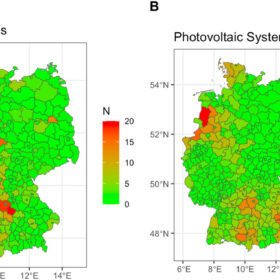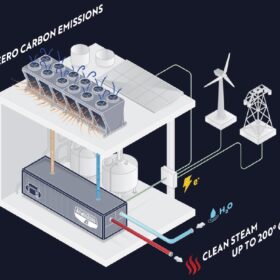Legitimation, competition drive citizen-led PV initiatives in Germany
Scientists have analyzed what factors affect the emergence of solar associations and cooperatives in Germany. Applying the organizational ecology theory, they found a collective solar initiative in a given district may likely lead to creation of similar experiences in the same district.
GCL SI to introduce carbon-tracing mechanism across entire value chain
GCL SI says it will track carbon emissions from polysilicon production to module assembly and shipping. Each module will have a QR code revealing its specific carbon emissions, protected by blockchain tech to prevent tampering. It says this will offer transparency in preparation for looming Carbon Border Adjustment Mechanism (CBAM) rules.
AGC uses recycled glass from PV panels for float glass production
The Japanese glass, material, and chemical manufacturer announced a successful test using recycled cover glass from solar panels in the manufacturing of float glass, with technology suppled by Tokuyama Corporation.
The Hydrogen Stream: Stadler finalizes longest hydrogen train test
Stadler says it has wrapped up a hydrogen train test, while Ballard has secured a long-term agreement to supply 1,000 hydrogen fuel cell engines through 2027.
PV-driven green hydrogen may be sold in Australia at $2/kg by 2030
Australian researchers have calculated the levelised cost of green hydrogen under different installed capex scenarios for 2030. They also looked into the different possible sizing of PEM electrolyzers.
Israel hits 51% renewable production for first time
The Israeli government said that earlier this month, for several minutes, renewable energy accounted for most of the nation’s energy production. In particular, solar covered 45% of total generation.
K2 Systems to offer mounting system for green solar roofs
Germany’s K2 Systems says that its new mounting system will be available in the spring. It supports module elevation of 10 degrees to 15 degrees.
Vehicle-integrated photovoltaics for electric ground transport
Canadian custom module manufacturer Capsolar developed a vehicle integrated PV system (VIPV) for an electric material towing application, reportedly enabling 30% to 40% range increase per battery charge.
US startup develops air-source steam heat pump for industrial use
Colorado-based AtmosZero has closed a Series A funding round that will help it accelerate the commercialization of its Boiler 2.0 technology. The air-sourced heat pump generates steam for industrial use and can be combined with PV generation and storage.
Pedaling Power
The co-founder of a Lithuanian company which has developed a new exercise bike that can generate and store electricity makes the case for the contribution “energy harvesting from daily human activity” can make to the energy transition.










